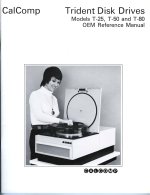Decades ago, I worked for Thoroughbred Software and they owned an MAI BASIC Four computer. They are still in business.
https://www.thoroughbredsoftware.com/ . It had two removable disk drives, a system unit and a terminal.. Before I started working there, somebody went to make a backup, copying one disk to the other, and got the order wrong.
That was probably an old one with a Microdata CPU and a Diablo 44 disk drive. I still remember Clock / Reset / Run was the front panel operation to boot.
The Diablo 44 was a 10MB 5-over-5 removable 5440 on top and a fixed platter on the bottom. The backup sequence, which had to be followed
EXACTLY, was:
1) Spin down disk, remove production top pack
2) Insert scratch pack, labeled "Bottom Backup mmddyy" or something similar, and spin up the drive
3) Copy the bottom to the top, spin down and remove Bottom Backup pack.
4) Insert production top pack, spin up
5) Copy top to bottom
6) Spin down, swap out production top pack
7) Insert scratch pack labeled "Top Backup mmddyy" and spin up
8) Copy bottom to top
9) Spin down, remove Top Backup pack
10) Insert Bottom Backup pack, spin up
11) Copy top to bottom, spin down
12) Swap Top backup pack for production top pack, spin up
13) Pray that you didn't screw up
This couldn't be automated because there was a reboot between pack changes (both the production top and the bottom were bootable, so there should always be at least one bootable platter in the drive.
It was quite a relief when the system was updated to a MAI-built CPU with a pair of Calcomp T25 drives.
Back then, OS updates (which included both the OS and the BASIC language interpreter) were delivered on packs that had to be returned. The software was called BOSS (Basic Operating System Software, I think). We used to say "Meet the new BOSS, same as the old BOSS" (from The Who's "Won't Get Fooled Again". That involved a simplified version of the 13-step shuffle to make sure both the top and bottom had the same BOSS version on them.

